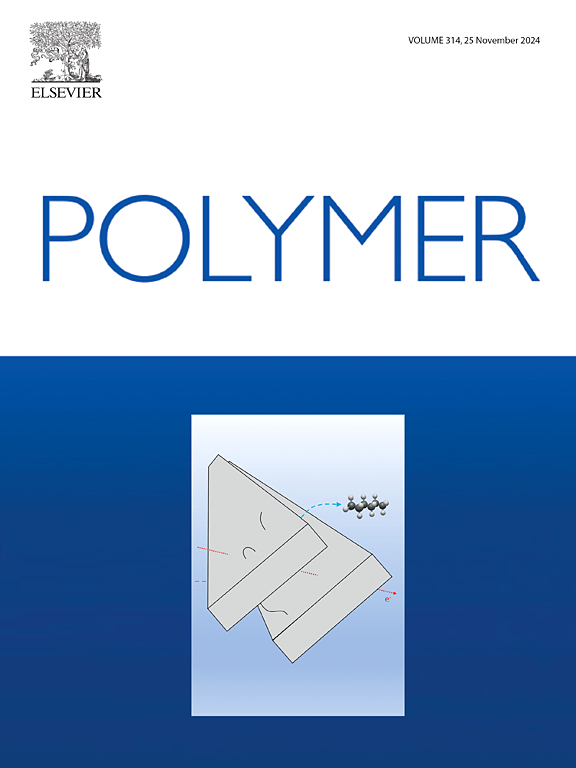An Alkynyl-Based Olefin-linked Covalent Organic Framework as an Anode Material for Potassium-ion Batteries
IF 4.1
2区 化学
Q2 POLYMER SCIENCE
引用次数: 0
Abstract
Rechargeable batteries, particularly lithium-ion batteries (LIBs), have become the preferred choice for high-performance energy storage systems powering portable electronics. However, potassium-ion batteries (KIBs) are emerging as a viable alternative due to lithium's limited availability and high cost. Covalent organic frameworks (COFs), an advanced class of crystalline porous polymers, have become attractive electrodes for KIBs thanks to their great chemical stabilities and tunable electrochemical properties. In this study, an olefin-linked alkynyl-based COF containing 1,3,5-tri(arylethynyl)benzene (TAEB) and 2,4,6-trimethyl-1,3,5-triazine (TMT) units was utilized as a bulk anode material for KIBs. The TAEB-TMT-COF demonstrated a reversible capacity of 124 mAh g-1 after 300 cycles with an efficiency of ∼ 99 %. TAEB-TMT-COF also exhibited a reversible capacity of 105 mAh g-1 after 300 cycles at a high current density of 500 mA g-1 with ∼ 99 % efficiency. The excellent performance is attributed to the chemical stability of olefin-linkage and the presence of the alkynyl groups, which aid in enhancing the binding of K-ions.

炔基烯烃连接共价有机骨架作为钾离子电池负极材料
可充电电池,特别是锂离子电池(lib),已经成为高性能储能系统为便携式电子设备供电的首选。然而,由于锂的有限可用性和高成本,钾离子电池(kib)正在成为一种可行的替代方案。共价有机框架(COFs)是一种先进的晶体多孔聚合物,由于其优异的化学稳定性和可调的电化学性能,已成为极具吸引力的kib电极。在本研究中,一种含有1,3,5-三(芳基乙基)苯(TAEB)和2,4,6-三甲基-1,3,5-三嗪(TMT)单元的烯烃链烷基基COF被用作kib的大块阳极材料。经过300次循环后,TAEB-TMT-COF的可逆容量为124 mAh g-1,效率为~ 99%。在500 mA g-1的高电流密度下,经过300次循环,TAEB-TMT-COF的可逆容量为105 mAh g-1,效率为~ 99%。这种优异的性能是由于烯烃链的化学稳定性和炔基的存在,这有助于增强k离子的结合。
本文章由计算机程序翻译,如有差异,请以英文原文为准。
求助全文
约1分钟内获得全文
求助全文
来源期刊

Polymer
化学-高分子科学
CiteScore
7.90
自引率
8.70%
发文量
959
审稿时长
32 days
期刊介绍:
Polymer is an interdisciplinary journal dedicated to publishing innovative and significant advances in Polymer Physics, Chemistry and Technology. We welcome submissions on polymer hybrids, nanocomposites, characterisation and self-assembly. Polymer also publishes work on the technological application of polymers in energy and optoelectronics.
The main scope is covered but not limited to the following core areas:
Polymer Materials
Nanocomposites and hybrid nanomaterials
Polymer blends, films, fibres, networks and porous materials
Physical Characterization
Characterisation, modelling and simulation* of molecular and materials properties in bulk, solution, and thin films
Polymer Engineering
Advanced multiscale processing methods
Polymer Synthesis, Modification and Self-assembly
Including designer polymer architectures, mechanisms and kinetics, and supramolecular polymerization
Technological Applications
Polymers for energy generation and storage
Polymer membranes for separation technology
Polymers for opto- and microelectronics.
 求助内容:
求助内容: 应助结果提醒方式:
应助结果提醒方式:


